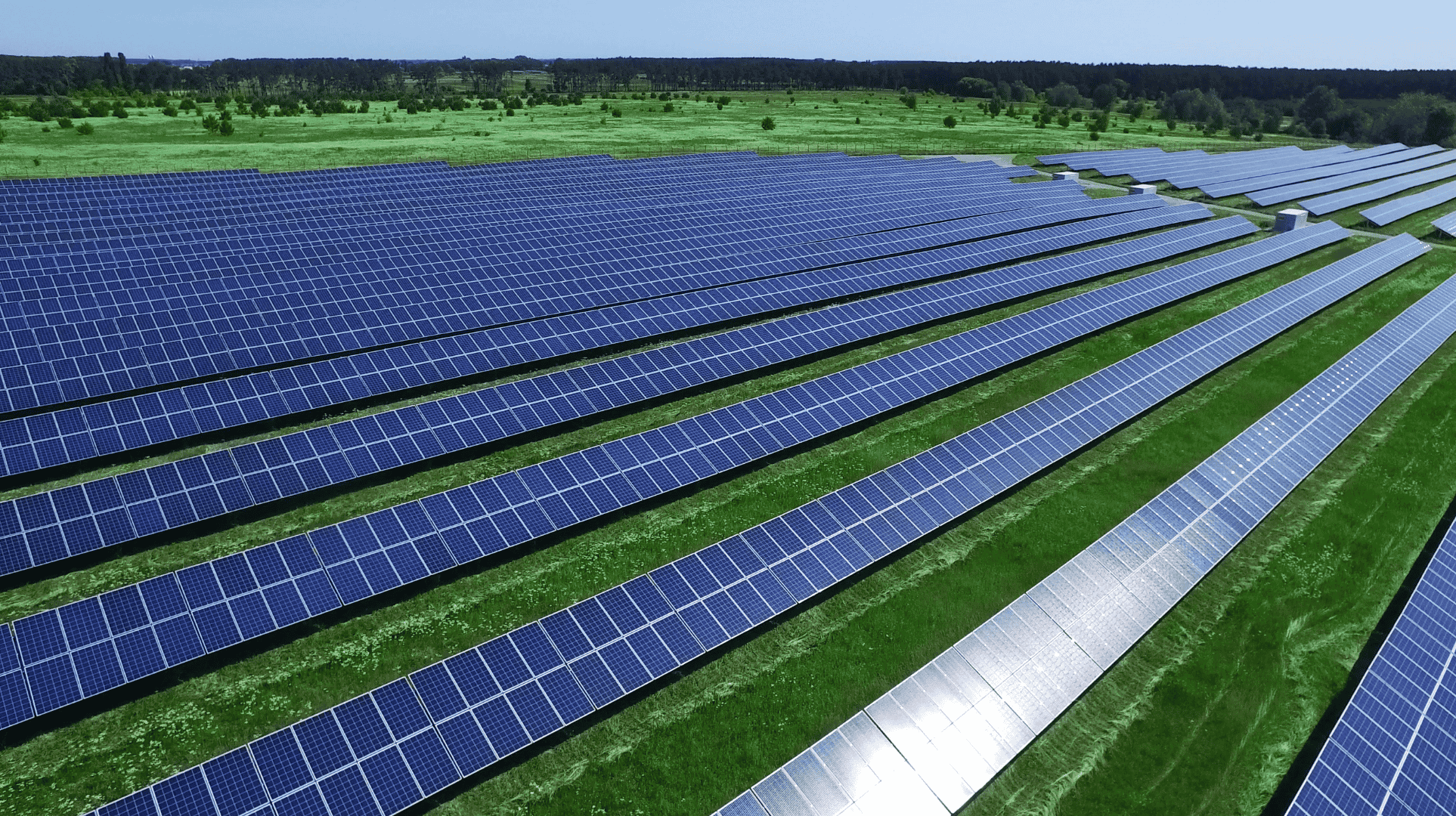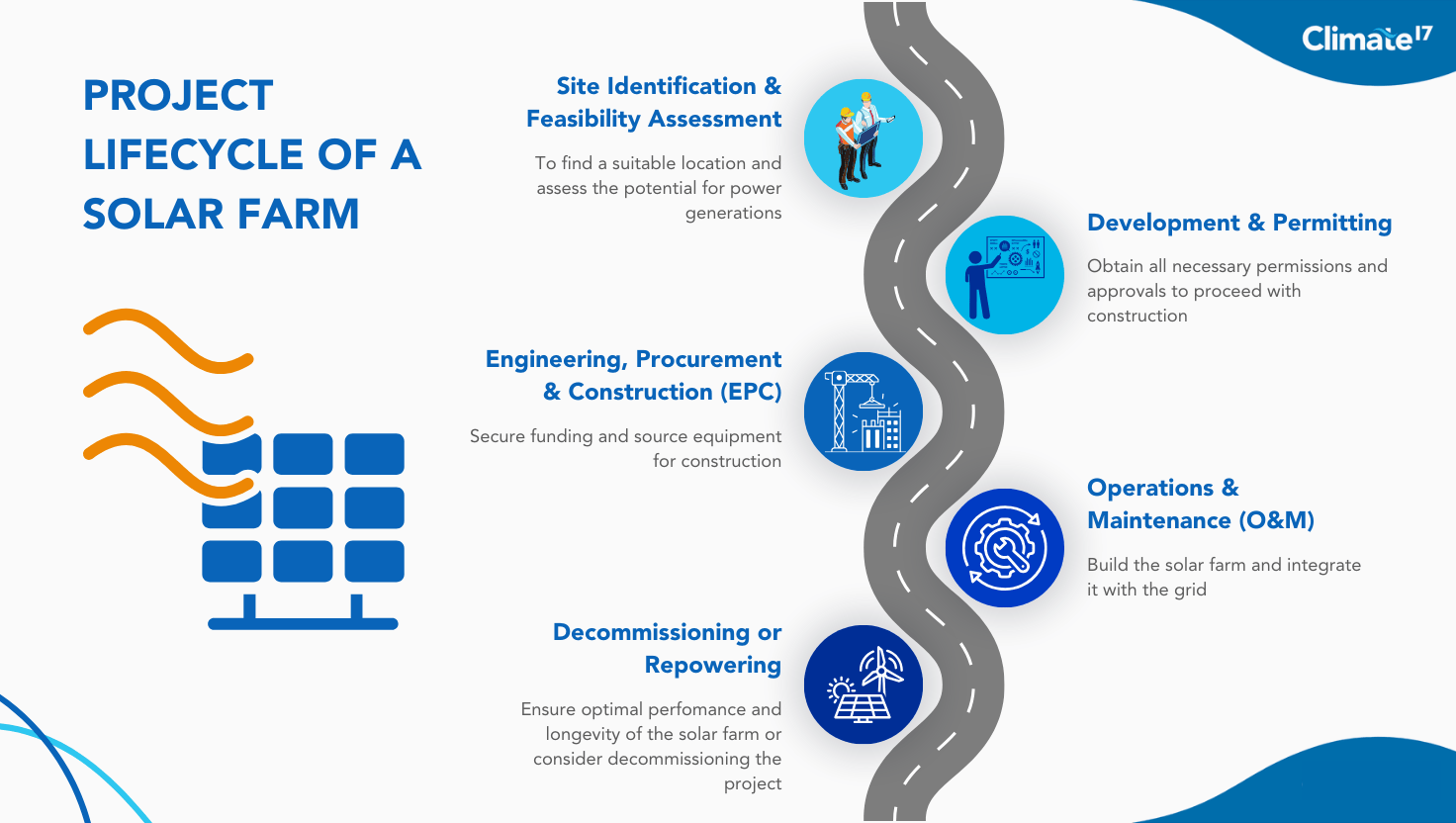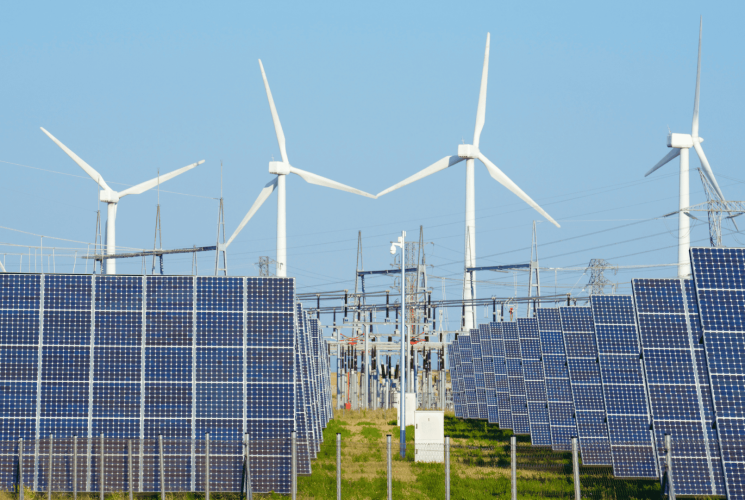Full Project Lifecycle of a Solar Farm

So, you want to build a solar farm?
I’ve developed this blog to help deepen understanding of the full project lifecycle of a renewable energy development, such as a solar farm, and what specialist professionals are required at each phase of the cycle. The process involves numerous moving parts, multiple stakeholders, and careful coordination to ensure everything aligns.
Considering that in 2023/24 alone, 1,700 grid connection applications were submitted, covering solar farms, wind farms, battery energy storage systems (BESS), and other low-carbon technologies, it’s clear just how much demand there is for new energy infrastructure.
A large portion of these projects will never be built and are commonly known as ‘Zombie Projects’, meaning they are technically still alive but are not moving forward due to grid constraints, planning/ land issues, and financial challenges.
All these projects do is block grid capacity, increase the size of the queue, and delay other project applications, some of which face delays of up to 15 years!
Grid reform plans to change this by adding new measures to identify these projects and remove them from the queue by transitioning to the ‘first ready, first connected’ model.
To get a clearer picture of a full project life cycle, I’ve broken the process down into five key stages, outlining the essential responsibilities for typical job roles involved at each stage.
Road Map of the Project Lifecycle

Stage 1
Site Identification & Feasibility Assessment
Objective: To find a suitable location and assess the potential for power generation.
The first stage in developing a solar farm sets the foundation for the entire project and the talent brought in here can dramatically influence success. This phase is characterised by a blend of commercial knowledge, technical analysis, and environmental insight. At the core of this stage are Development Managers, who are responsible for steering early project decisions, often working alongside Land Acquisition Managers who secure viable land parcels. The role of Grid Connection Engineers is critical here, as they determine whether grid access is feasible, a particularly sensitive issue given the UK's evolving “first ready, first connected” queue system - check out our blog which breaks down the new system.
Other key figures include Environmental Consultants, particularly those with EIA and planning experience, who assess ecological and visual impact constraints. Financial Analysts specialising in renewable infrastructure are tasked with modelling high-level feasibility, factoring in ROI, potential power purchase agreements, and cost of capital assumptions.
In today’s market, Development Managers and Grid Engineers are in notably high demand, as companies race to secure viable grid-ready land parcels before capacity bottlenecks worsen. These roles are currently among the most competitive to hire for, with companies often headhunting to secure talent with end-to-end development experience. Conversely, there is a relatively strong pool of skilled Environmental Consultants and Financial Analysts available in the market, particularly those moving over from traditional infrastructure or oil and gas sectors.
Stage 2
Development & Permitting
Objective: Obtain all necessary permissions and approvals to proceed with construction.
Once a project site is selected and initial feasibility has been confirmed, the next stage is obtaining the necessary permits, consents and stakeholder agreements. This stage introduces many strict regulations and requires professionals with deep knowledge of planning law; community engagement and environmental consultation processes ensures that developments don‘t get stalled early. Leading the charge are Planning & Permitting Managers, whose expertise in navigating local planning authorities, Nationally Significant Infrastructure Projects (NSIP) and environmental consultation processes ensures that developments don’t get stalled early.
Grid Connection Managers continue to play a role here, particularly when negotiating grid impact studies and reinforcements costs with DNOs or TOs. Their ability to manage the nuances of G99/G100 applications and associated grid studies is crucial for progressing past this milestone. Legal & Compliance Specialists also becoming increasingly important at this stage to plan lease structuring whilst evaluating land law and risk allocation.
In terms of market trends, Planning & Permitting Managers have become one of the most sought-after roles in 2025. With the UK’s pipeline of solar projects ballooning and local authority planning teams stretched thin, companies are hiring experienced professionals to help fast-track submissions once financial investment is secured. There’s also hiring interest around Legal & Compliance roles, particularly those with experience structuring joint ventures or third-party investment deals. There is a number of strong junior development engineers with strong technical skills but limited exposure to project work, making them a viable talent pool for long-term projects.
Stage 3
Engineering, Procurement & Construction (EPC)
Objective: Secure funding and source equipment for construction.
The is the most capital-intensive phase of a solar farm’s lifecycle and where execution risk of a project is at its highest. Roles required at this stage of the cycle usually include a combination of engineering disciplines, project controls and construction management. EPC Project Managers are the backbone of this phase, responsible for orchestrating suppliers, contractors and stakeholders to ensure projects are delivered safely on time and within budget. Working closely with them are Electrical Design Engineers and Civil Engineers, who finalise system designs in line with compliance and grid codes whilst Construction Managers lead on-site delivery, coordinating subcontractors and enforcing health and safety regulations.
Commissioning Engineers play a critical closing role in this phase by ensuring that all installed systems pass compliance testing and grid integration benchmarks. In parallel, Procurement Managers ensure long lead-time items such as PV modules, transformers and SCADA systems are sourced competitively and delivered on schedule.
In today’s market, EPC Project Managers and Electrical Design Engineers are two of the most sought-after roles in the renewables market currently. Their mix of technical understanding and real-world construction experience is rare, particularly in candidates with solar experience. With the rapid buildout of utility-scale solar, these skilled workers are often snapped up by IPPs or headhunted through deep networks. On the other hand, the market of construction managers is strong, with many transitioning from oil & gas or other infrastructure projects and holding a deep bag of transferrable skills to renewables.
Stage 4
Operations & Maintenance (O&M)
Objective: Build the solar farm and integrate it with the grid.
Once a solar farm is energised, long-term success depends on how well it is maintained and optimised. This stage requires a blend of technical, analytical and financial skills. Asset managers are central figures here, tasked with ensuring that projects perform financially, overseeing revenue flows and engaging with investors. They work alongside O&M Managers who, supervise the physical upkeep of the plant. This includes cleaning, inspection, and repair cycles.
SCADA & Control Engineers manage system monitoring tools that track generation, diagnose faults and flag underperformance. Performance Analysts bring in data intelligence, benchmark actual output vs expected and optimising for efficiency, Increasingly, this phase also includes roles such as Battery Energy Storage System (BESS) analysts with projects co-located with battery storage systems.
O&M Is one of the fastest-growing segments in the renewables market, as many projects begin to reach the operations phase of the cycle. Asset Managers are in high demand as project owners shift from construction to optimising their operational portfolio. There is also a strong pool for SCADA & control engineers as many begin to transition from broader industrial backgrounds into renewables.
Stage 5
Decommissioning or Repowering
Objective: Ensure optimal performance and longevity of the solar farm or consider decommissioning the project.
The end-of-life phase of a solar farm is becoming more prominent as early-generation projects their 25-to-30-year lifespans. This phase involves making strategic decisions between decommissioning, repowering or hybridising existing assets with battery storage or other emerging technologies. Decommissioning project managers are at the forefront of decision making at this stage; they handle the planning and execution of site shutdowns, equipment removal and land restoration. Where assets are to be upgraded, repowering engineers are crucial to using their specialist knowledge to redesign layouts, integrate new, higher efficient panels and navigate new planning regulations. Sustainability and Recycling Consultants are being brought into these discussions to ensure that the decommission and dismantling of material is handled responsibly.
While still niche, demand for End-of-Life Strategy roles are beginning to rise as developers look to hire lifecycle asset managers and repowering engineers years before assets expire to prepare for a seamless transmission from operation to decommission. Many professionals from industries such as environmental consultants and waste logistics can be retrained or repositioned for renewables.
Final Thoughts
Building a solar farm is a complex and multi-layered process that requires strategic planning, technical expertise, financial modelling, and coordinated stakeholder engagement. From initial site identification and feasibility assessments through to development, engineering, construction, and ultimately decommissioning or repowering, each stage demands careful management and specialist input.
As the number of grid connection applications continues to surge, understanding the full lifecycle of renewable energy projects is crucial, not just for successful delivery but also for navigating challenges such as grid constraints, planning hurdles, and financial viability.
With grid connection reforms underway, the landscape is evolving, and developers who are well-prepared will be best positioned to move their projects forward efficiently.
In the next blog, I’ll break down accurate costings across each stage of a solar farm project, providing a clearer picture of what it truly takes financially to bring a project from concept to energisation.
If you have any questions or want guidance, feel free to contact me here.
Recent news and views
How to Build A Development Team in the USA
Build a strong development team with the right skills, culture, and strategy. Learn how US renewable recruitment works and how to attract, hire, and retain top talent in a competitive market.

Sustainability in Transition: A Changing Market, a Crowded Talent Pool, and the Value of Specialist Recruitment
Over the past 12 months, the sustainability market has entered a new era. The job market surrounding it has become more complex, competitive and in many cases, challenging to navigate for both employers and candidates.

El rompecabezas de la energía renovable en España
El apagón de 2025 en España mostró que el reto está en la infraestructura, no en las renovables. Redes inteligentes, almacenamiento y flexibilidad serán claves para un futuro energético limpio y resiliente.

How to Build A Development Team in the USA
Build a strong development team with the right skills, culture, and strategy. Learn how US renewable recruitment works and how to attract, hire, and retain top talent in a competitive market.

Sustainability in Transition: A Changing Market, a Crowded Talent Pool, and the Value of Specialist Recruitment
Over the past 12 months, the sustainability market has entered a new era. The job market surrounding it has become more complex, competitive and in many cases, challenging to navigate for both employers and candidates.

El rompecabezas de la energía renovable en España
El apagón de 2025 en España mostró que el reto está en la infraestructura, no en las renovables. Redes inteligentes, almacenamiento y flexibilidad serán claves para un futuro energético limpio y resiliente.

Sign up to our newsletter
Jobs, insights, resources and more. A monthly update, straight to your inbox.





